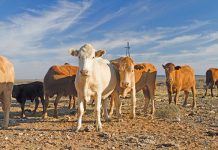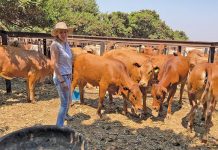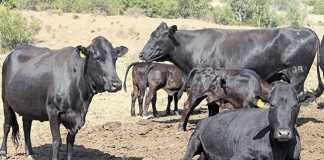
On arriving home from hospital, my first-born needed a nappy change. I gallantly told my wife to leave it to me while she rested. I did everything I was supposed to – so changing and washing nappies became my job for another three children. Maybe I should’ve botched up that first effort! On the other hand, I learnt something important. I realised what a good indicator of health poo is. Even if the baby seems healthy, you can be sure something is wrong if the odour, colour or consistency of the poo changes.
The same principle applies to cow dung! My championing of examining cow dung as an important diagnostic technique gained me the nickname “Dr Dung” – but I wasn’t offended if it helped get the message across.
Get to know dung
Ruminant dung is made up of undigested feed residue. This residue includes gastric juices, bile and pancreatic and enteric (of the intestine) cellular debris from the gut’s mucus (the slimy substance secreted by the mucus membrane). It also includes products excreted into the gut’s lumen (canal or cavity) and cellular debris from the micro-organisms that grow in the large intestine.
A 680kg cow may slough off about 2 500g of cells from the gut wall daily. This represents about 500g of protein, some of which is reabsorbed in the lower gut. Interestingly, humans absorb about 4kg/year of their own sloughed cells. A cow’s wet faecal mass varies from 30kg to 50kg/day in 10 to 24 portions. The moisture content may vary from 60% to 85%, depending on the food. Water loss through faeces and urine is equal – about 31l of each, expelled over about nine excretions a day. So combined water loss through urine and dung can total about 60l/day.
Evaluating dung
Dung can tell you about the cow’s nutritional status. The correlation between total equivalent dry matter and fat-corrected milk yield, should, by now, be accepted as an undisputed fact. A desirable dung pat is 3cm to 5cm high and 35cm to 37cm in diameter with a “thick porridge” consistency. Check dung quantity and consistency to evaluate the suitability of the cow’s ration, based on the following:
- Soup consistency: This is unacceptable. It can cause benign diarrhoea, body-mass loss, and a decrease in butter-fat yield. Benign diarrhoea could be a result of extremely lush ryegrass pasture with a protein content of over 20%. The moisture content of this dung will exceed 90%.
- Thin porridge consistency: This is not firm enough to form a pat. It shows that there’s a slightly excessive lush-pasture intake, too much protein and excessive salt.
- Thick porridge consistency: This is firm enough to form a pat – the ideal. It indicates the correct balance between protein, water, fibre and concentrate. A nice ”plop, plop” sound can be heard when the cow defecates.
- Thick dome consistency: The pat is about 10cm high and 15cm in diameter. This is typical of non-milk cows and heifers on mostly dry hay plus a little pasture or maize silage – of quite a low nutritional and digestibility value.
- Plaited dome consistency: Dry faecal balls with a high fibre content and a distinct plaited surface area are a sure sign of dehydration.
The large fibre particles suggest insufficient mastication (cud chewing).
Chemical analysis
Despite the huge diversity of feed rations, the chemical analysis of cow dung, listed below, is quite consistent. This proves that 70% to 80% of nutrients are derived from microbial activity.
- Moisture: 60% to 80%.
- Protein: 17% (so 2,7% nitrogen).
- Calcium: 1,4%.
- Phosphorus: 0,8% to 1%.
- Sodium: 0,4%.
- Potassium: 1% to 2%.
- Magnesium: 0,3% to 0,4%.
- Sulphur: 0,1%
Malcolm Stewart-Burger has more than 40 years’ experience in ruminant husbandry. He founded the Society of Master Dairymen and designed the Maxi Milk System. He is currently a part-time consultant to Nutex Feeds and De Heus.













